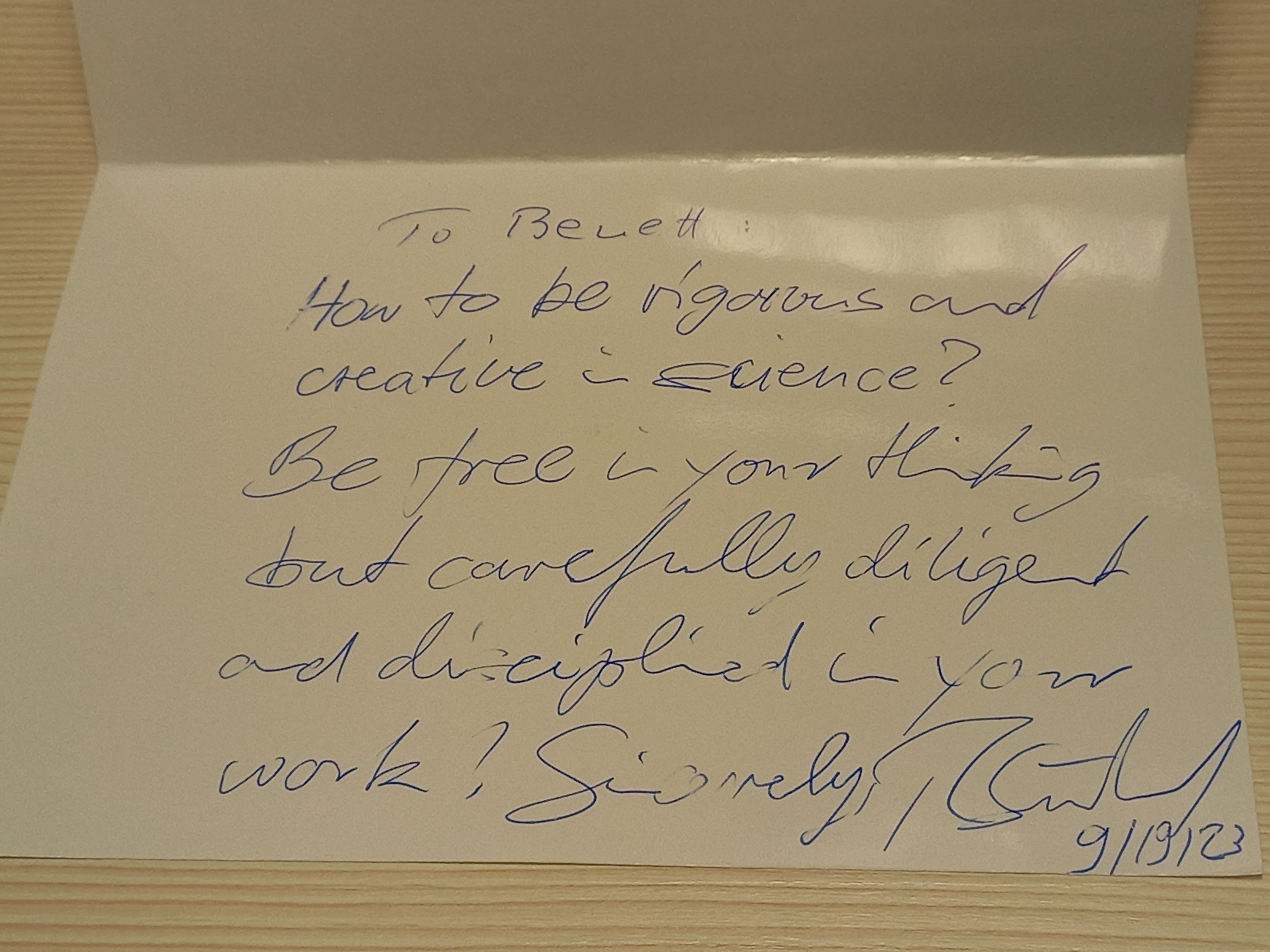Visit of Professor Südhof
Some visits are an honor for the hosts. This was the case with Professor Thomas C. Südhof, who visited our institute on 19 September 2023 and gave a lecture for us.
Although I read it somewhere on the internet, I have no doubt that the most famous scientist in the world, known to most people at least by name, is Einstein. It is highly unlikely that even in the week of the Nobel Prize announcements at least one laureate would be known by everyone worldwide, and the fact that in Hungary almost every news-follower now knows two new Nobel laureates, is far from universal. Thus, only those who have dedicated their scientific careers to research into the so-called synapses that enable chemical signaling between nerve cells have some reason to be ashamed if they do not know the name of the eminent Stanford University professor THOMAS C. SÜDHOF. In 2013, he shared the Nobel Prize in Medicine with Randy Schekman and James Rothman for his "discovery of the mechanism that regulates vesicular trafficking, one of the most important transport systems in our cells". In the context of the Nobel Prize, it is essential to note, as Professor Südhof did in his Nobel lecture, that their prize-winning work was based on the pioneering discoveries of his first master and doctoral supervisor, Victor P. Whittaker, who first isolated synaptic vesicles.
Professor Südhof was introduced before his lecture by his host, Zoltán Nusser, Director of our Institute. "Professor Südhof has been interested in the mechanism of neurotransmitter release since the establishment of his first laboratory at Southwestern University in Dallas in 1986. He has made an enormous contribution to our understanding of the molecules and molecular steps leading to the fusion of synaptic vesicles and presynaptic plasma membranes. . . . among his many discoveries in the last almost 4 decades, I would like to highlight the discovery of synaptotagmin as a Ca sensor for neurotransmitter release. Later, professor Südhof's work also turned to the analysis of the formation and specification of synapses, processes that mediate their formation, regulate their maintenance and termination, and determine their properties."
Professor Südhof's lecture also focused on the role of a protein that builds the synapse membrane. While the results presented were of course of most value to those who also study the properties of synapses that make up brain circuits, all students could learn a lot from Professor Südhof's lecture. His aim was that all his students should understand as much as possible from the results presented. It was served by the relaxed style of presentation and the one or two-line summary at the bottom of each slide, which was most useful when something was not clear.
Réka Kispál was one of the undergraduate students who had the opportunity to have lunch and talk with Professor Südhof after this lecture. She was impressed by the fact that he did not give the lecture with a ready-made, rehearsed text, but as if he were speaking his mind. "You can tell that he not only has a lot of experience in research, but he is a skilled speaker and loves what he does. It was a great experience to listen," she added.
Réka, who felt she could not miss the opportunity to have lunch with a Nobel Prize-winning researcher, readily described how the remarkable event took place at Madame Pho restaurant.
- It was a very good lunch, and I was very pleasantly disappointed that a Nobel laureate, a famous researcher, was so humble, human, and willing to answer all our questions.
As I did not know what to expect, I did not prepare any questions and asked what I felt was right on the spot. Mainly we all asked him for advice. Each time a different question was asked and Professor Südhof explained his answers at length, so we all had time to eat. The professor even took care to talk to all of us, not just the brave ones.
He gave us a lot of good advice, from the filters we should use to select articles to read, to choose a university or even a research topic, to choosing the right research group. He advised us not to stick to one topic, but to try to delve into as many things as possible, because that is how you can gain the most knowledge. He also suggested that when choosing the right research group for you, you should be careful not to join a group that is too large, because the leader will not have a clear overview and the quality of the work will be affected. He added that many publications from a group do not always reflect the quality of the work, and often not even the impact factor of the journal in which they are published. The quality of an article does not depend on this, and those with a bigger name publish more easily. He also revealed how much and how much his own group is involved. It was a fantastic experience and it would be an honor to work in his group.
What more can be added to this?
Perhaps it is the message that Professor Südhof has kindly written to our colleague Szilvia Kőszegi's 14-year-old godson, who is aspiring to a Nobel Prize.
"How to be powerful and creative in science?
Be free in your thinking, but careful, diligent, and disciplined in your work."






